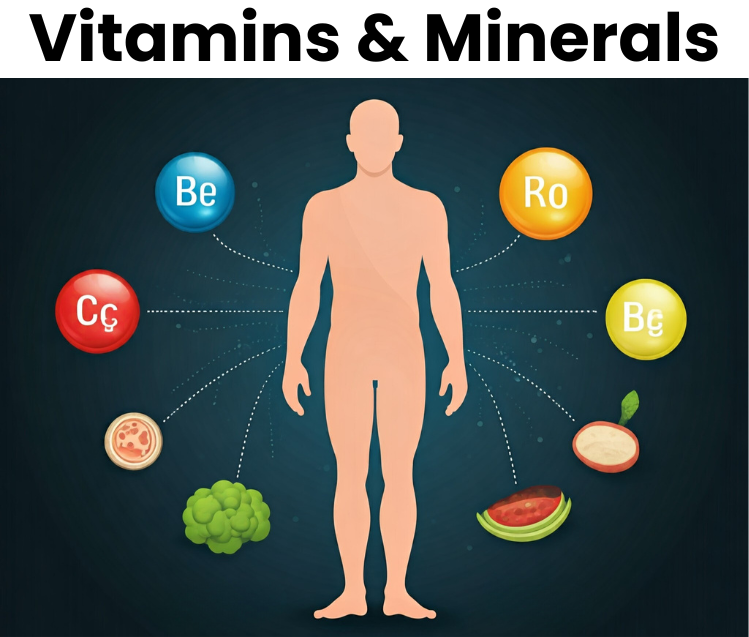Vitamins and Minerals: Absorption in Our Body
The human body is a complex machine, and like any machine, it requires fuel to function optimally. This fuel comes in the form of vitamins and minerals, essential micronutrients obtained from a balanced diet. But how do these vital substances make their way from our plates to our cells, where they play crucial roles in various bodily processes? Let’s embark on a journey through the digestive system to understand the fascinating process of vitamin and mineral absorption.
The Digestive Symphony
The digestive process begins in the mouth, where food is mechanically broken down by teeth and mixed with saliva. Saliva contains enzymes that start the chemical breakdown of carbohydrates. The partially digested food, now called a bolus, travels down the esophagus to the stomach.
In the stomach, the bolus is further broken down by gastric juices, which contain hydrochloric acid and enzymes. This acidic environment helps denature proteins and activate digestive enzymes. The resulting mixture, called chyme, is then released into the small intestine, the primary site of nutrient absorption.
The Small Intestine: A Nutrient Absorption Powerhouse
The small intestine is a long, coiled tube lined with villi, tiny finger-like projections that increase the surface area for absorption. The villi are further covered with microvilli, creating a brush border that maximizes contact with the digested food.
Fat-Soluble Vitamins (A, D, E, K)
- Emulsification: Fat-soluble vitamins are first emulsified by bile acids secreted by the liver and stored in the gallbladder. Emulsification breaks down large fat globules into smaller droplets, increasing their surface area for digestion.
- Micelle Formation: The emulsified fats combine with bile salts to form micelles, which are small, water-soluble structures.
- Absorption: Micelles transport the fat-soluble vitamins to the enterocytes, the cells lining the small intestine. The vitamins are then absorbed into the enterocytes and packaged into chylomicrons.
- Chylomicron Transport: Chylomicrons are transported through the lymphatic system and eventually enter the bloodstream, delivering the fat-soluble vitamins to various tissues.
Water-Soluble Vitamins (B complex, C)
- Direct Absorption: Water-soluble vitamins are absorbed directly into the bloodstream from the small intestine.
- Carrier-Mediated Transport: Some water-soluble vitamins require specific carrier proteins to be transported across the intestinal cell membrane.
Minerals
- Active Transport: Many minerals, such as iron, calcium, and magnesium, are actively transported across the intestinal cell membrane against a concentration gradient. This process requires energy.
- Passive Diffusion: Some minerals, like potassium and sodium, can be absorbed through passive diffusion, moving from an area of high concentration to an area of low concentration.
Factors Affecting Absorption
Several factors can influence the absorption of vitamins and minerals:
- Dietary Intake: Adequate intake of vitamins and minerals is essential for optimal absorption.
- Digestive Health: A healthy digestive system, including sufficient stomach acid and bile production, is crucial for efficient absorption.
- Other Nutrients: Some nutrients can interact with each other to enhance or inhibit absorption. For example, vitamin C can improve iron absorption.
- Medications: Certain medications may interfere with the absorption of specific vitamins and minerals.
The Journey Continues
Once absorbed, vitamins and minerals are transported to various tissues throughout the body, where they play essential roles in numerous physiological processes. They contribute to energy production, cell growth and repair, immune function, bone health, and many other vital functions.
In conclusion, the absorption of vitamins and minerals is a complex and finely tuned process that ensures our bodies receive the nutrients they need to thrive. By understanding the mechanisms involved, we can make informed choices about our diet and lifestyle to optimize nutrient absorption and overall health.








